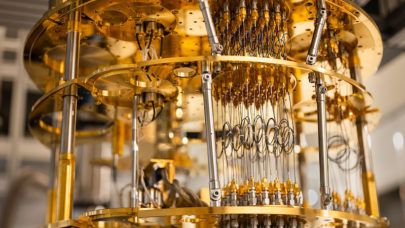
Call for Participation in Workshop on Potential NSF CISE Quantum Initiative
March 26, 2024
Editor’s Note: Next month there will be a workshop to discuss what a quantum initiative led by NSF’s Computer, Information Science and Engineering (CISE) di Read more…

NSB Issues 2024 S&E Indicators Report
March 19, 2024
As always, there’s good and bad news in latest Science & Engineering (S&E) Indicators Report, issued biennially by the National Science Board. On the Read more…

It Doesn’t Get Much SWEETER: The Winter HPC Computing Festival in Corpus Christi
February 14, 2024
(Main Photo by Visit Corpus Christi CrowdRiff) Texas A&M University's High-Performance Research Computing (HPRC) team hosted the "SWEETER Winter Comput Read more…

TACC Champions AI Progress with Inclusion of Frontera and Lonestar6 in NAIRR Pilot
February 2, 2024
The Texas Advanced Computing Center is poised to play a pivotal role in the recently announced National Artificial Intelligence Research Resource (NAIRR) pilot, Read more…

The IBM-Meta AI Alliance Promotes Safe and Open AI Progress
December 5, 2023
IBM and Meta have co-launched a massive industry-academic-government alliance to shepherd AI development. The new group has united under the AI Alliance banner Read more…

NSF Gives Guidance on National Quantum Virtual Laboratory Proposals
August 8, 2023
A National Science Foundation webinar held last week and led by Bogdan Mihaila, director of NSF Physics at the Frontier program, provided more guidance for pote Read more…

PEARC23 Day Two Plenary: Firefighting and Funding
July 27, 2023
Editor's note; The Day 1 and Day 2 reports from PEARC23 got crossed in the wires. Both reports are now posted. Thanks to Ken Chiacchia of the Pittsburgh Superco Read more…

NSF Seeks Proposals for National Quantum Virtual Laboratory
July 18, 2023
NSF this week issued a solicitation for proposals to create a National Quantum Virtual Laboratory, which NSF describes as “an overarching shared infrastructur Read more…

- Click Here for More Headlines

Whitepaper
Transforming Industrial and Automotive Manufacturing
In this era, expansion in digital infrastructure capacity is inevitable. Parallel to this, climate change consciousness is also rising, making sustainability a mandatory part of the organization’s functioning. As computing workloads such as AI and HPC continue to surge, so does the energy consumption, posing environmental woes. IT departments within organizations have a crucial role in combating this challenge. They can significantly drive sustainable practices by influencing newer technologies and process adoption that aid in mitigating the effects of climate change.
While buying more sustainable IT solutions is an option, partnering with IT solutions providers, such and Lenovo and Intel, who are committed to sustainability and aiding customers in executing sustainability strategies is likely to be more impactful.
Learn how Lenovo and Intel, through their partnership, are strongly positioned to address this need with their innovations driving energy efficiency and environmental stewardship.
Download Now
Sponsored by Lenovo
Whitepaper
How Direct Liquid Cooling Improves Data Center Energy Efficiency
Data centers are experiencing increasing power consumption, space constraints and cooling demands due to the unprecedented computing power required by today’s chips and servers. HVAC cooling systems consume approximately 40% of a data center’s electricity. These systems traditionally use air conditioning, air handling and fans to cool the data center facility and IT equipment, ultimately resulting in high energy consumption and high carbon emissions. Data centers are moving to direct liquid cooled (DLC) systems to improve cooling efficiency thus lowering their PUE, operating expenses (OPEX) and carbon footprint.
This paper describes how CoolIT Systems (CoolIT) meets the need for improved energy efficiency in data centers and includes case studies that show how CoolIT’s DLC solutions improve energy efficiency, increase rack density, lower OPEX, and enable sustainability programs. CoolIT is the global market and innovation leader in scalable DLC solutions for the world’s most demanding computing environments. CoolIT’s end-to-end solutions meet the rising demand in cooling and the rising demand for energy efficiency.
Download Now
Sponsored by CoolIT
Advanced Scale Career Development & Workforce Enhancement Center
Featured Advanced Scale Jobs:
HPCwire Resource Library
HPCwire Product Showcase
© 2024 HPCwire. All Rights Reserved. A Tabor Communications Publication
HPCwire is a registered trademark of Tabor Communications, Inc. Use of this site is governed by our Terms of Use and Privacy Policy.
Reproduction in whole or in part in any form or medium without express written permission of Tabor Communications, Inc. is prohibited.
























